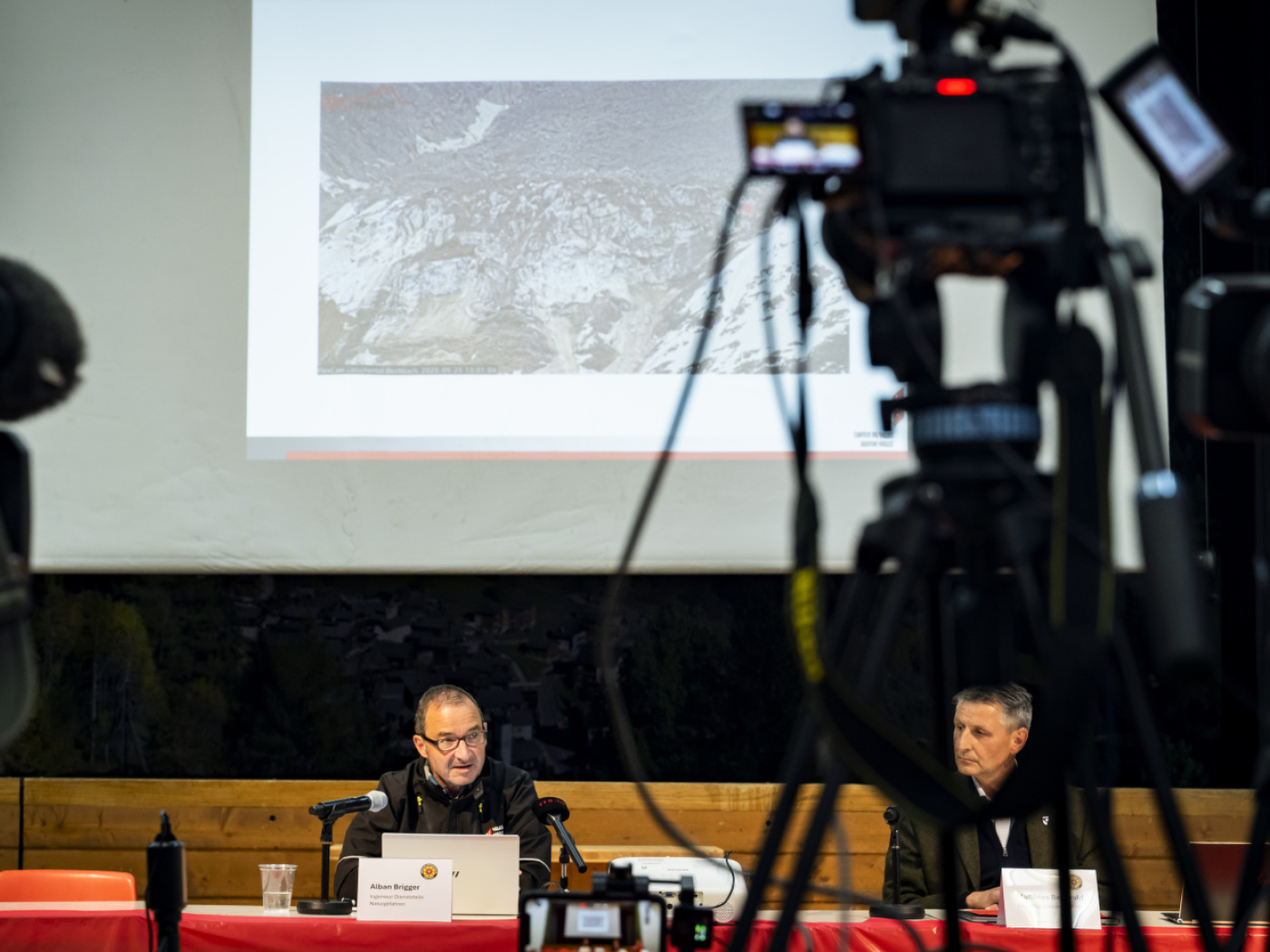
Nine million kilograms of rubble lie on Birch Glacier

The Birch Glacier above Blatten in the Lötschental valley, canton Valais, is causing the most concern among experts. According to the cantonal natural hazards office, it is in danger of breaking off. There are around nine million tonnes of debris on the ice.
+Get the most important news from Switzerland in your inbox
The glacier is moving towards the valley by two-and-a-half to three-and-a-half metres per day, Alban Brigger from the Valais Natural Hazards Office said at a media event in Ferden on Sunday. An exponential acceleration, as was feared, was not observed.
The information is not reliable, as the experts had “major problems” with data transmission via the GSM mobile phone network. The reason for this is the limited bandwidth in the Lötschental, Brigger explained. He hoped for a solution with Swisscom in the next day or two. Another possibility is a solution via satellite communication.
A new, fresh crack was also spotted in the Birch Glacier. “This crack is practically continuous.” Brigger assumed that the glacier would “break off in the near future”. This could happen in several events or in one. However, the ice will certainly not remain where it is now, he said.
+ How to protect people and homes from Swiss landslides
A 3D analysis of the eroding Kleiner Nesthorn showed that the mountain has become smaller in certain places compared to July 2024. The largest subsidence is 101 metres, Brigger said. The rubble is now further down. The material is piled up to 81 metres thick.
Village still in danger
The next step is to improve the monitoring system for the glacier and the cantonal road to Blatten, among other things. The latter is very exposed and lies below the glacier. The first steps towards installing a monitoring system were initiated last week.
Brigger asked the inhabitants of the evacuated village to be patient. He wanted to get people back home with as little risk as possible. At present, the possibility of parts of Blatten being buried cannot be ruled out, he said.
Translated from German by DeepL/ts
How we work
We select the most relevant news for an international audience and use automatic translation tools such as DeepL to translate them into English. A journalist then reviews the translation for clarity and accuracy before publication. Providing you with automatically translated news gives us the time to write more in-depth articles. The news stories we select have been written and carefully fact-checked by an external editorial team from news agencies such as Bloomberg or Keystone.
Did you find this explanation helpful? Please fill out the short survey below to help us understand your needs.
Don’t miss your chance to make a difference! Take our survey and share your thoughts.

In compliance with the JTI standards
More: SWI swissinfo.ch certified by the Journalism Trust Initiative




























You can find an overview of ongoing debates with our journalists here . Please join us!
If you want to start a conversation about a topic raised in this article or want to report factual errors, email us at english@swissinfo.ch.